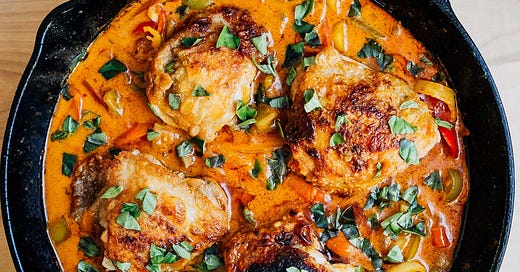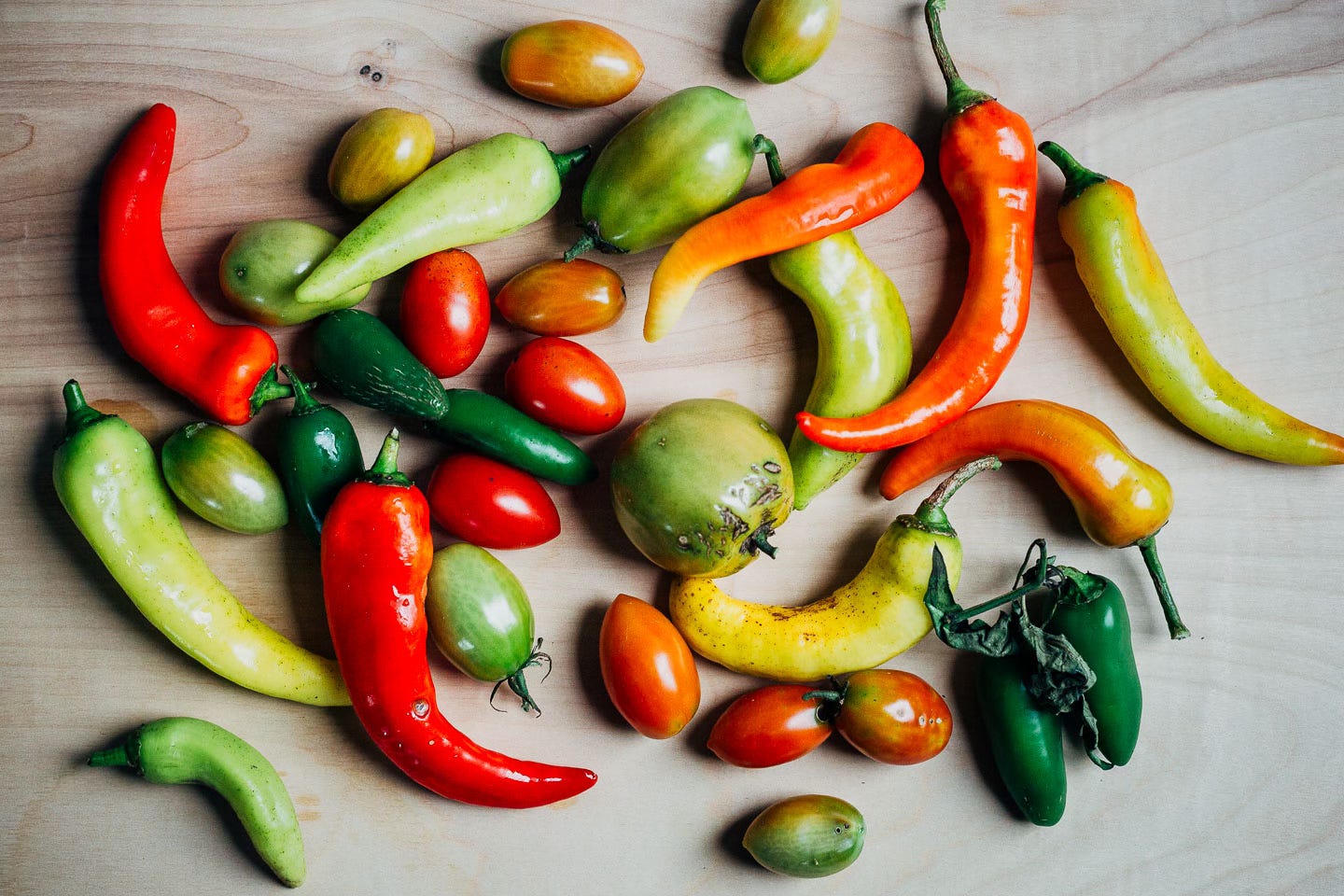Right Now: Coconut-Braised Chicken with Green Tomatoes and Peppers
And an ode to the first frost
I like that the first frost of the year is just a whim of the weather, and not any predictable time we can put on a calendar. In a single night, a hard frost ends the growing season and drastically changes the landscape.
In Charlottesville, the first frost arrives sometime after mid-October. I do what I can to prepare and harvest the last of the herbs, tomatoes, and peppers as they trickle in. But when the forecast calls for the first hard frost, it's always a scramble to pull in whatever is left and can be used ahead of the landscape-altering event.
When the frenzy is over, my kitchen table is covered with piles of herbs, various lettuces and greens, and tomatoes and peppers in varying stages of ripeness. We must deal with it all.
The greens are rinsed and eaten right away. The same for the herbs except for those destined to be dried. As for the tomatoes and peppers, there's always chowchow.
Or maybe a fragrant braise that makes use of all these garden odds and ends?
In preparation for the first frost, or just the messy end of the summer garden, I have a flexible and delicious recipe for coconut milk-braised chicken with green (or regular) tomatoes, peppers and chilies, and scattered herbs. We are making use of what we have and it will be delicious!
Cold Weather Gardening
For those interested, I also keep a fall and winter garden under covered hoops. The practice is extremely unpredictable. In very cold years (or those with a stretch of sub-20 degree temps), I have greens and hardy lettuce til mid- to late December. In warmer years, I have greens and cabbage indefinitely, and feel slightly better for harnessing the changing climate for food production.
Large hoops covered tightly with agricultural cloth mostly keep the frost out. The cloth I use is rated to about 22 degrees F. Agricultural cloth comes in various temperature ratings. You'll need to find the right balance for you since the warmer the cloth's rating, the more light it blocks. If you have access, straw or leaves tucked around the vegetables will help keep them warm too. If there are a couple days of sub-25 degree weather, I'll sometimes cover the hoops with heavy duty tarps and hope what's inside survives the brief chill. Other times, I surrender to the forces of nature and accept that my garden is going to freeze solid.
Sometimes the plants make it all the way through the year (mostly kale, collards, and cabbages); other times, they grow well, stall out in January, and then come back to life. Whatever's left by the time spring rolls around bolts at the first hint of warmth, so by then I clear the bed and start over.
Coconut-Braised Chicken with Green Tomatoes, Peppers, and Herbs
Keep reading with a 7-day free trial
Subscribe to Right Now to keep reading this post and get 7 days of free access to the full post archives.





